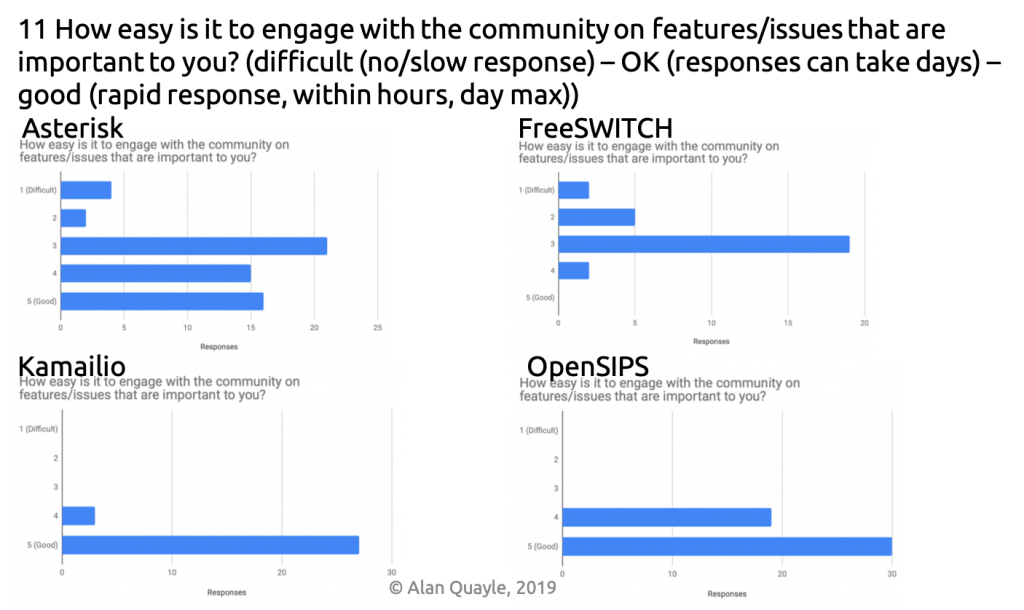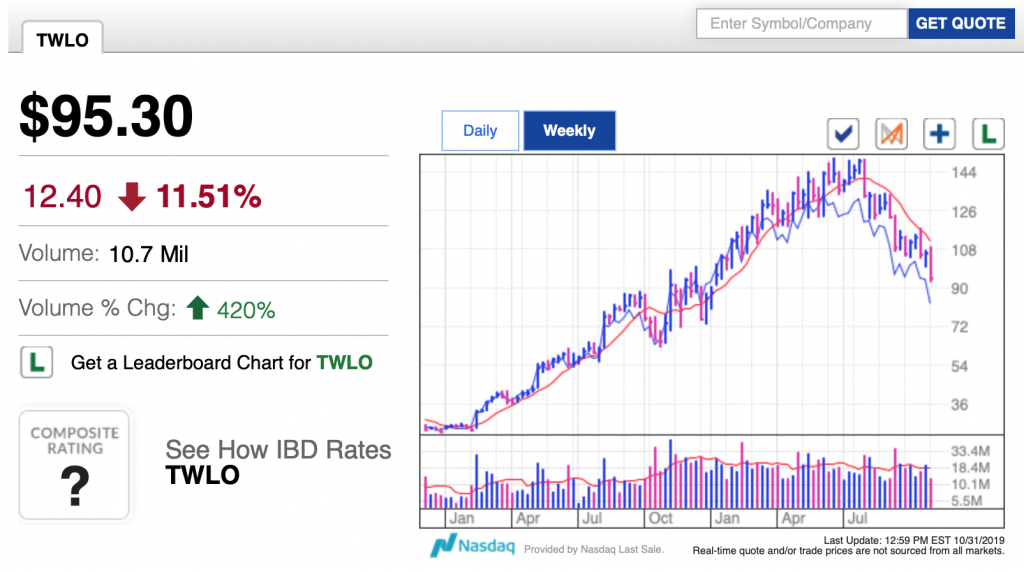The purpose of this CXTech Week 44 newsletter is to highlight, with commentary, some of the news stories in CXTech this week. What is CXTech? The C stands for Connectivity, Communications, Collaboration, Conversation, Customer; X for Experience because that’s what matters; and Tech because the focus is enablers.
You can sign up here to receive the CXTech News and Analysis by email. Please forward this on if you think someone should join the list, I also publish this on my weblog. And please let me know any CXTech news I should include.
Astricon 2019 Keynote
This was my first Astricon in-person, I’d watched the videos and twitter stream remotely in the past. I’m waiting for some of the slides to be available before I write a full review of the event. This is just some initial commentary.
The power of any open source project is its community, together they make change happen in a market. The community is not only about the creation, maintenance, and evolution of the core product; it’s also about all its commercial applications.
For me, the main value was the conversations with the many small and medium sized companies deploying Asterisk, FreePBX, Wazo, as well as the commercial products in the Sangoma portfolio such as Switchvox, PBXACT, phones and gateways.
Astricon is not an event talking about potentialities, it’s an event focused on meeting customers’ needs today. Astricon has the most diverse audience of any ‘customer’ event I’ve attended.
One clear trend is the growth of specific IoT use cases (e.g. asset tracking, security) that are deployed around PBX/IT deployments. This has little to do with the PBX, and everything to do with the outsourced IT role the providers play for their customers.
This year the new business area is video to improve on the asset tracking and security use cases. For example, the key card is authenticated, and you have a picture/video of the person entering, to ensure the card and person entering match or simply for evidence. For next year, I recommend Astricon have practice sharing sessions on IoT and video applications / solutions. Not IoT platforms, not IoT visions, not AI-based IoT magic. Stuff the channels can deploy and solve customers’ problems immediately.
Announcing Jared Smith as the Vice President of Open Source Community Development is an important step as Sangoma learns how to be the best custodians they can be for Asterisk. Jared gave the geekiest presentation I attended at Astricon on FreePBX 15, it was fun and I learned much. Sangoma were frank, they’ve made mistakes in their communications around open source and want to do better. Astricon was definitely interesting, this is a project in transition, with massive upside across the community if they can get the recipe right.
With a free core product, the diversity of applications and business models at Astricon is far greater than any other customer event I’ve attended. The openness of discussions and sharing of business experience was unique. For many it’s easy to right off open source as, “look at those people making money off your product investment without paying you anything.”
The world is more complex than that, some do take a free ride. I run events where potential sponsors turn up, eat my sandwiches and leave without ever sponsoring. But that’s OK as most potential sponsors pay, and regardless they contribute to the discussions, and hopefully hire a few of the people taking part which improves the overall success of the conference. Open source must be viewed in aggregate not individual cases.
I show below a slide I shared at TADSummit Americas earlier this month. OpenSIPS and Kamailio are clearly more loved than Asterisk and FreeSWITCH. When I asked people at Astricon about this difference, there was a common refrain. There needs to be a clear separation between the open source project and any commercial enterprise. OpenSIPS and Kamailio focus on maintaining that separation, while with Asterisk being owned by Sangoma and the significant overlap between FreeSWITCH and SignalWire has an impact.

You can review my keynote slides with some commentary here, its best to listen to the audio and flick through the slides, as the video is a bit boring, just me talking and occasionally pointing at a screen you can not see.
The bottom line is any business with enough technical skills can fork an open source project. Many UCaaS and CCaaS providers have either done so or are prepared to do so. So open source dependency is not a fatal business issue, rather a potential annoyance.
Vonage Rebranding Signals Single CPaaS Approach
Nice review of the messaging from Vonage’s event that ran in parallel with Astricon by Dan Miller of Opus Research. The comparison to Twilio is interesting.
Vonage is an enterprise focused telco, from telephony, through PBX/CC, to lots of communication apps and services you can buy direct or through a channel. It has a CPaaS business but the head to head competition with Twilio is reducing given the divergence of business focus as the APIs will increasingly focus on driving sales for Vonage’s enterprise services not potential competitors’ enterprise services.
Twilio is a programmable telecoms enabler (CPaaS), which uses channel to resell (almost product) like Twilio Flex to simple communication APIs for anyone who wants them. Examining their respective channels opens up even more differences. Vonage has few service providers, but lots of MSPs and telecom resellers (packaging and bundling of Vonage’s services); while Twilio has more service providers (building and offering services on top of Twilio’s APIs and services).
Its also 2 quite different models in go to market – sales driven (Vonage) versus inbound leads (Twilio). Note, Twilio spends loads on internet marketing, I see Twilio adverts all the time on Reddit.
Twilio Q3 Total Revenue of $295.1 million, up 75% year-over-year
But for the current quarter ending Dec. 31, Twilio forecast revenue in a range of $311 million to $314 million vs. estimates of $322 million. The company said it expects profit of 1 cent to 2 cents vs. estimates of 7 cents.
This soft guidance could be laying the ground for a block buster Q4, or we could finally be seeing all the competition and evolution in the market finally nipping at its heels. We’ll know next quarter.
Wazo had a Great Astricon
Wazo were a sponsor of Astricon, and gave a number of well-attended presentations. In my Astricon weblog to come, I’ll cover this in more detail. Just a few highlights:
I liked this article on Wazo Platform, explaining how Wazo allows you to build your own IP communication infrastructure and deliver innovative communication services. Fully open-source, API-centric, Cloud-native & multi-tenant, the project is designed around the famous open-source frameworks Asterisk & Kamailio. And below is a great overview of Wazo’s pitch from Jérôme.
Just like I’ve done with Apigee, Nexmo, Tropo, Apidaze, Mio and many more before. They’re a start-up to watch.
And the collective experience once you get RCS installed is a disappointed ‘Oh’
The US carriers announced the Cross Carrier Messaging Initiative. And the Android community immediately found how to set up Android Messages to support RCS with Google rather than the carriers. And the collective experience was a disappointed ‘Oh.’ Let’s see how the A2P experience evolves.
People, Gossip, and Frivolous Stuff
Ir Ts Azizi Hadi, is now Chief Network Officer at Telekom Malaysia
Anthony Rus, is now Account Director at TeleSign
Conner Luzier (serial TADHack Winner), is now on a Software Developer Internship at CyberMedics
Miren Elía is now Manager of Communications at McKinsey & Company. She was the comms manage for BlueVia, who had the most open and honest communications of any telco owned business I have ever seen.
David Duffett, is now Worldwide Community Advocate at SignalWire.
Shandton Williams, AVP Wholesale Services at IMImobile
Jason Grooms, Strategic Account Executive at eightfold.ai. I’ve known Jason since Leapstone.
Evin Hunt is available for your programmable communications / telecoms technology needs. Check out his Linkedin profile, he’s a really smart and nice guy.
